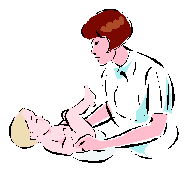12 RANDOM FOODS TO OPTIMIZE YOUR BRAIN
Don't let stress and toxins eat your brain!
The human brain has its amazing and extraordinary function that comes all thoughts, judgment, memories, and behaviors. It has a unique role of receiving and interpreting stimuli, not to mention its subdivisions which are responsible for effective usage of language, movements, vision, hearing and balance, human senses, consciousness etc. The brain's physiology is truly matchless to any famous invention or even rising innovation that this world can offer. Indeed, it is only the mighty hand of God that made this breakthrough possible.
Just like any part of the human body, the brain has natural defenses against foreign substances to prevent health related problems. And for it to function well, it needs constant supply of blood and adequate nourishment from food supplies. Here are some of the foods that can optimize and increase your brain function:
1. Egg yolk
It has choline property which is responsible for brain development and function. The amount of cholesterol is about 200 to 250 mg. so a person can adjust his egg intake from other sources as well.
FUN TRIVIA:
1. It is rare, but not unusual, for a young hen to produce an egg with no yolk at all.
2. According to the Guinness Book of Records, the record for throwing a fresh egg without breaking it is 317 feet, 10 inches.
2. Yellowfin tuna or other fish sources
It has a rich source of omega- 3 fatty acids that can enhance learning capacities, boost energy, improve problem-solving skills, and smooth communication between brain cells.
FUN TRIVIA:
1. The yellowfin is a member of the mackerel family and the most brilliantly colored of the tunas.
2. Their age can be determined by counting the rings that develop in the otoliths (inner ear bones).
3. Strawberries
One study shows that strawberry- eaters have higher learning capacities and better motor skills than non- eaters. Notably, it is of great help to people of various ages to have better memory recall.
FUN TRIVIA:
1. Strawberries are the only fruit with seeds on the outside.
2.There is a museum in Belgium just for strawberries.
3. Folk lore states that if you split a double strawberry in half and share it with the opposite sex, you’ll soon fall in love
4. Chocolates
It is a common belief that chocolates are beneficial to brain and can enhance one's mood. Endorphins released can improve focus and concentration. Dark chocolate has flovanols which boost blood supply to the brain and help improve cognitive skills. Milk chocolate can improve verbal and visual memory; boost impulse control and reaction time.
FUN TRIVIA:
1. In Hershey, PA, the street lights on the main street are all shaped like Hershey kisses.
2.The country that consumes the most chocolate per person per year is Switzerland.
3. Chocolate can be lethal to dogs.
5. Soy
Soy is rich in choline, lecithin and isoflavones. Lecithin prevents deposits of plaques in the brain while isoflavones improve cognitive function, category fluency, logical memory, spatial cognition and memory recall.
FUN TRIVIA:
1. Tofu is commonly called meat without bones.
6. Green Tea
It is the best bet to a good and relaxed mental condition and can keep one's wits sharpened and even combat mental fatigue.
FUN TRIVIA:
1. Lu Dong, a Daoist priest was inspired by a poem Chajing that he decided to spend his entire life looking for the perfect tea preparation.
7. Whole grain products
It has a soothing effect to the brain. This would include whole grain breads, cereals, brown rice and oatmeal. They are better choices than white breads, pastries and pasta due to its possible lethargic effect.
FUN TRIVIA:
1. January is also an oatmeal month.
2. Astronauts from Apollo 11 boosted their brain power while in space with a cereal breakfast.
8. Dark leafy vegetables
It is a high caloric food yet a very smart choice of food because of its nutritive value. They can help retain memory and even boost brain power.
FUN TRIVIA:
1. In 1929 Popeye the spinach loving sailor first appeared in the comic strip 'Thimble Theatre.' Elzie Segar created Popeye.
9. Nuts and seeds
Often called the brain foods because of its rich source in Vitamin E, Vitamin B6, folate, Omega 3-6 fatty acids and antioxidants. All contributes to the slow aging, improve mental condition and brain development. It is an excellent source of nourishment to the brain
FUN TRIVIA:
1.Two peanut farmers have been elected President of the United States: Thomas Jefferson and Jimmy Carter.
10. Iron rich foods
Since iron carries oxygen in hemoglobin, it is essential for brain nourishment and its normal functioning. Iron plays its role to metabolism and use of neurotransmitters such as serotonin, norepinephrine and dopamine. They affect mood, attentiveness and calmness.
FUN TRIVIA:
1. Most food folklore suggests that New Year's celebrations should include pork and sauerkraut to ensure good luck in the coming year.
2.The beefiest day of the year is consumed on Memorial Day.
11. Calcium rich foods
Foods rich in calcium can be effective tranquilizer. It releases serotonin which has a calming effect and helps prevent anxiety. Ideal consumption is more than 1000 mg per day for all its other health purposes.
FUN TRIVIA:
1. Turophilia is a love of or obsession with cheese.
2. A giant wheel of Cheddar cheese was given to Queen Victoria (1837-1901) for a wedding gift. It weighed over 1,000 pounds.
12. Sweet potatoes
It is packed with carotenoids which give its tint of rich orange color. Carotenoids act as antioxidants which prevent inflammation or protect cells from damage. It aids in the formation of Vitamin A, which is important in helping to bring new neurons together and form new connections from nerve impulses.
FUN TRIVIA:
1. The Tater Day Festival, one of the few festivals devoted to sweet potatoes, is held in Benton, Kentucky annually.
2. The Spanish who brought sweet potatoes back from the West Indies called them by their native name batatas.
And lastly, never forget to consume 8-10 glasses of water to combat dehydration. It prevents the release of cortisol which shrinks dendrites, the branches of the brain that store information.
Have a healthy brain!



































































